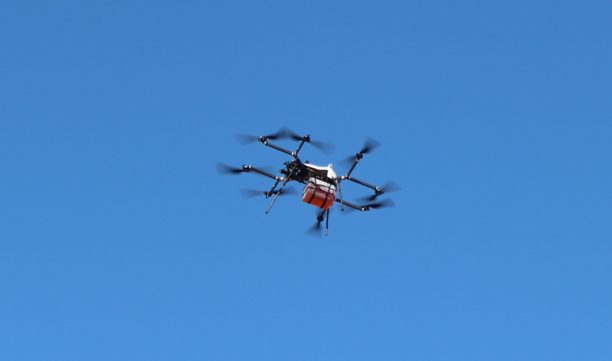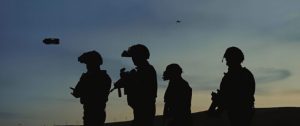Pentagon Transfers Blue sUAS Program to DCMA: Increased Opportunities and Competition in the Drone Industry
The Pentagon has transferred the Blue sUAS (“small Unmanned Aircraft Systems”) program from the Defense Innovation Unit (DIU) to the Defense Contract Management Agency (DCMA), marking a significant shift. This change is designed to simplify the procurement process for drones by the U.S. military, accelerate approval procedures, and broaden the spectrum of eligible manufacturers, which could have substantial impacts on the drone sector.

The Blue sUAS Program: A Brief Overview
The U.S. government requires drone technology that is secure, resilient, and devoid of questionable foreign components, especially from China. Launched in 2020 by the DIU, the Blue sUAS program serves to evaluate and scale reliable commercial drone technology for government and military use. Inclusion in this program involves passing rigorous cybersecurity, supply chain, and National Defense Authorization Act (NDAA) compliance tests, which facilitates procurement by the Department of Defense (DoD) without the need for individual exceptions.
What’s New: From DIU to DCMA and a Two-Tier System
The Leadership Change
Starting January 1, 2026, the DCMA will assume control from the DIU, which is a strategic move owing to DCMA’s larger size and budget. According to AUVSI CEO Michael Robbins, DCMA’s extensive resources are better suited for managing the Blue List. While DIU will remain active, providing support and updating security standards, DCMA will oversee the primary responsibilities related to the program.
“The DCMA will be properly resourced to accomplish this mission … DIU will continue to update the related checklists, which will be used by approved third-party and other assessors… to ensure the newest industry technologies are available to the warfighter and that those standards are being met.” — DIU Spokesperson
The Blue List Evolution
The Blue sUAS directory is now divided into two segments:
| List | Purpose | Eligibility |
|---|---|---|
| Blue UAS Cleared List | A broader catalog meeting baseline security standards | Compliant sUAS platforms suitable for most government needs |
| Blue UAS Select List | Drones with superior, unique military capabilities | Elite-tier drones meeting the highest operational demands |
This revision enhances options for buyers and creates entry opportunities for more manufacturers.
Addressing Procurement Delays: The Third-Party Testing Revolution
The exclusive compliance checks by DIU created prolonged waits, which have been alleviated with the inclusion of third-party Recognized Assessors.
- These assessors are approved external organizations capable of testing for NDAA and security compliance.
- Drone manufacturers now fund their own compliance assessments, which incentivizes quicker processes.
- Standards and checklists for testing remain under DIU’s purview, while DCMA and DoD accept the results from the third-parties.
This setup facilitates parallel testing, expediting market entry for manufacturers by bypassing the existing bottleneck.
In the previous selection process, 369 proposals from 19 countries were submitted, hinting at the innovation potential that could emerge under this newly streamlined system.
Implementation Details
The updated Blue sUAS procedure follows these steps:
- Manufacturers propose drones for compliance assessment.
- A Recognized Assessor performs thorough NDAA and security evaluations, which cover aspects such as:
- Ownership and supply chain verification
- Cybersecurity and penetration testing
- Hardware/software analysis
- Comprehensive reporting for DoD
- DCMA verifies compliance and adds drones to the relevant list.
- DIU maintains testing criteria updates and vendor engagement.
The Beneficiaries of the Program Changes
For Drone Manufacturers
- Improved Access: Streamlined entry for emerging manufacturers investing in compliance.
- Cost Management: With manufacturers funding their assessments, they can better plan market entries.
- Innovation Support: With two-tiered listings, distinct technological advancements may earn recognition.
For the Pentagon and Taxpayers
- Accelerated Acquisition: Enhanced access to secure drone technology by mitigating delays.
- Increased Security and Variety: A competitive vendor pool fosters a robust domestic drone ecosystem.
- Continuous Compliance Monitoring: Constant oversight ensures the upholding of security standards.
Market and Innovation Consequences
This transition symbolizes a major stride in the Pentagon’s approach to drone procurement, acknowledging the rapid evolution of commercial drone technology. Reduction of entry barriers and diversified approval paths convey the Pentagon’s acknowledgment of smaller, adaptable companies, stringent security, and varied operational demands.
Expect greater interest from U.S. startups and mid-size firms in DoD contracts, and possibly international companies looking to expand within U.S. parameters, provided they adhere to compliance requisites. Large defense firms may consider partnering with innovative drone firms to remain competitive.
Action Points for Drone Enterprises and Users
- Stay Informed: Regularly check updates on the Blue sUAS Cleared and Select lists.
- Invest in Compliance: Meeting security standards can expedite a place on the Blue List.
- Explore Recognized Assessor Opportunities: Companies skilled in compliance or cybersecurity might find new business avenues.
- Drive Innovation: With shifting demands for advanced tech solutions, the updated lists accelerate adoption.
- Utilize Industry Expertise: Firms like Skydio can provide insights into navigating these systems.
Improvement for Frontline Personnel
This program enhancement is fundamentally about delivering the most advanced, secure tools to U.S. personnel efficiently. Insider roles from cybersecurity testers to DCMA officials play key parts in this transformation, fostering outcomes that level the playing field for small drone makers and bring transformative tech to the fore more swiftly.
Conclusion
While not all startups will secure Pentagon contracts overnight, this shift to the DCMA and third-party assessor model represents substantial progress in terms of speed, transparency, and market opportunities. If you’re developing secure, cutting-edge drones, this transition period is ripe with potential. Utilize these changes for better security, wider choice, and quicker deployment. And, amidst all these advancements, the U.S. drone ecosystem becomes ever more vibrant.













